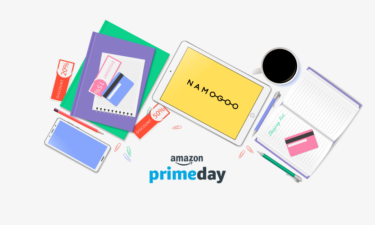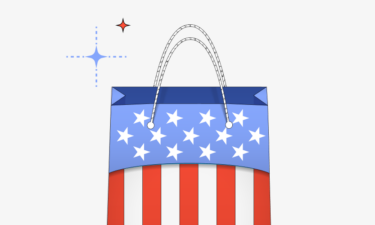Bonus Material: Promotions Insight Survey 2021 – Shoppers Edition
Revenue per visitor (RPV) helps eCommerce companies understand the value of each website visitor.
Unlike conversion rates, acquisition rates, and click-through rates, RPV doesn’t just look at how many visitors land on your site or how many of those visitors place an order, but also how valuable they are to your eCommerce business.
If you aren’t tracking RPV or aren’t sure if you should, this guide will walk you through everything you need to know about RPV, including what it is, why it matters, and how to calculate it.
What Is Revenue Per Visitor?
Revenue Per Visitor vs. Average Order Value
Why is Revenue Per Visitor Important?
How to Calculate Revenue Per Visitor
7 Strategies to Improve Revenue Per Visitor
Don’t Ignore Your eCommerce Store’s RPV
What Is Revenue Per Visitor?
Revenue per visitor, or RPV, is a metric most commonly used in eCommerce that measures the average revenue a business generates from each site visitor.
Unlike conversion rate, which tracks the number of users that convert, RPV tracks the actual value of each online customer.
This makes it a critical key performance indicator for eCommerce brands to track the health of their marketing efforts and their long-term impact on your business. For example, you could quickly increase conversion rates by offering 50 percent off everything in your store to every visitor, but your RPV would suffer — and so would your margins.
Revenue Per Visitor vs. Average Order Value
Another common and popular eCommerce metric is average order value or AOV.
While RPV and AOV may look similar at first glance, they are unique and each is important to track for different reasons.
Average order value measures the average revenue each order drives. It’s calculated by dividing the total value of all orders over a period of time by the total number of orders over the same period.
Read More: Average Order Value: The Advanced Guide
Thus, AOV focuses on the average value of each unique conversion, instead of the average revenue of each website visitor.
Why is Revenue Per Visitor Important?
Revenue per visitor is an important eCommerce metric and an overall KPI of online store health. It helps:
- Evaluate customer acquisition efforts
- Determine how effective your sales funnel is
- Provide focus on your most valuable customers.
RPV also provides context for other metrics you track, such as conversion rate, traffic, and acquisition costs. By understanding not just how many visitors you drive to your online storefront but also how much on average each spends with your brand, organizations can better plan their marketing budget, resources, and campaigns.
For example, you might find a BOGO offer increases site traffic by 50 percent. Sounds great, right?
If you are tracking Revenue Per Visitor, you might see those customers are actually spending far less than your average customer, reducing the efficacy of your new campaign.
RPV paints a picture of the long-term health of your eCommerce brand, making it a crucial metric. So, how do you calculate it?
How to Calculate Revenue Per Visitor
Now that you understand what RPV is and why it matters, let’s look at how to calculate it. While some tools may calculate this metric for you, the formula is pretty simple.
Revenue Per Visitor Formula
Revenue Per Visitor is calculated by dividing the total number of visitors in a given time period by the total revenue.
Here’s a basic formula you can use:
Total revenue
—————— = Revenue Per Visitor
Total site visitors
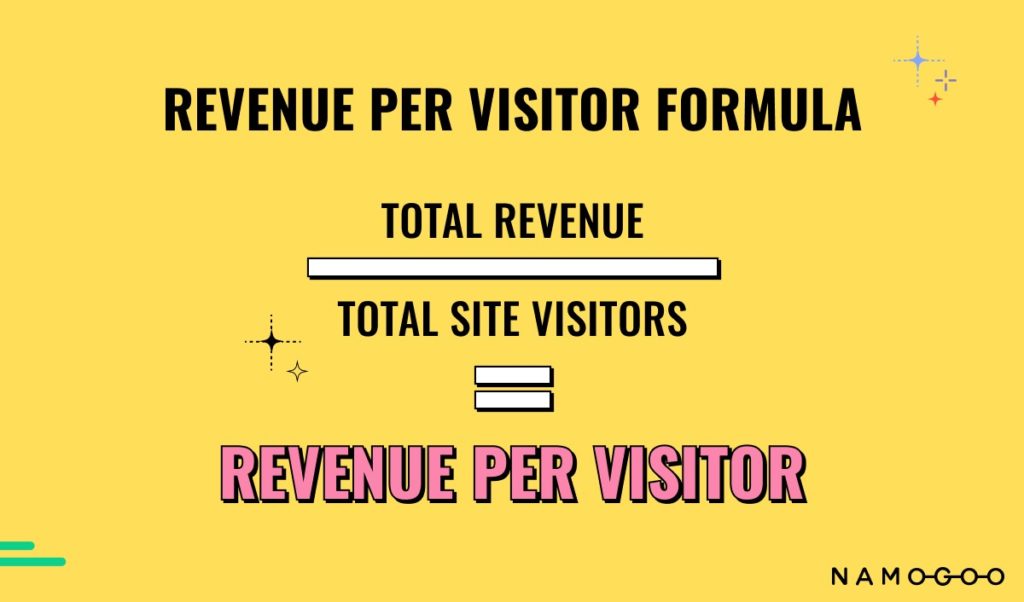
For example, if your site generated $20,000 in sales a month and had 2,000 visitors during that same period, your Revenue Per Visitor would be $10.
Revenue Per Visitor can be calculated for any time period, including per month, per quarter, or annually. It can also be used to track long-term trends by comparing RPV year over year or month to month.
When calculating RPV, consider using unique visitors rather than overall traffic to increase the metric’s accuracy.
Consider this — if you earned $10,000 in revenue and have 100 visitors, your RPV would be $100. If only 25 of those visitors were unique, however, your RPV would be much higher. This change could impact your marketing strategy and the ROI of campaigns.
The reality is, most visitors don’t convert on the first visit. Using unique visitors, rather than overall traffic, provides a more accurate view of the health of your business.
Examples of Revenue Per Visitor
So, how does RPV work in practice, and what can it tell you about your eCommerce site? Let’s look at an example.
A pet accessories site earned $10,000 in revenue in October and had 3,000 unique visitors. $10,000 divided by 3,000 equals an RPV in October of $33.33, meaning the average site visitor spends around $33.
What does this tell you?
Say the site was running Instagram ads, which cost $5 per lead with an average conversion rate of 50 percent. If they spend $500 on Instagram ads and have an RPV of $33, the total sales from the campaign should be $1650.
This is far more valuable than just knowing the conversion rate of Instagram ads is higher than search ads — it shows exactly how valuable each campaign should be.
RPV can also highlight the value of specific cohorts of customers. For example, calculating the RSV of email subscribers and comparing it to the RPV of traffic from search shows which customers are more likely to spend more on your site. That information can be used to justify changing your marketing budget to focus on one area.
7 Strategies to Improve Revenue Per Visitor
Revenue Per Visitor is a crucial metric for understanding the long-term health of your eCommerce website.
But what if your RPV is too low? There are several steps you can take to increase RPV.
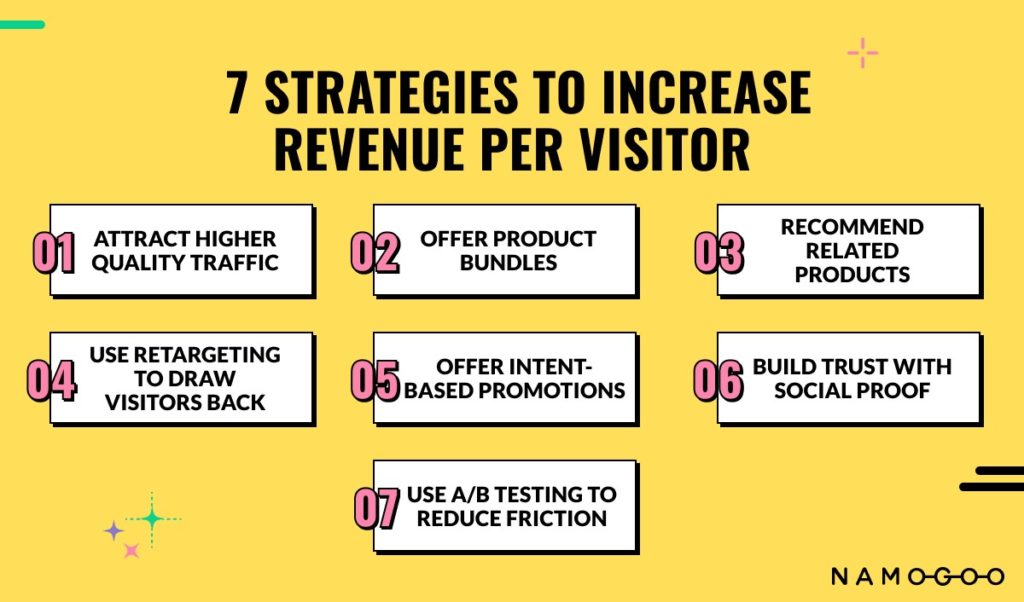
#1. Attract Higher Quality Traffic
Not all traffic is created equal. Increasing traffic by 50 percent sounds good until you look at your RPV and see that new traffic isn’t converting—or isn’t spending much when they do.
So, how can you increase the quality of your traffic? Here are a few ways to attract high-quality traffic and improve your RPV.
- Optimize title tags and meta descriptions: These are the titles and descriptions users see in the search results and can have a strong impact on click-through rates. Make sure they are descriptive, accurate, and encourage clicks.
- When using paid ads, target customers carefully: Ad platforms like Google Ads and Facebook make it easy to target very narrow audiences. Make sure your ad targeting focuses on your most valuable customers. Read more at Customer Segmentation: The Definitive Guide [2021].
- Create niche content: Rather than targeting broad keywords (like “running shoes,”) create content that answers specific, niched questions your customers are asking. Targeting long-tail keywords (like “how to choose the right running shoe for your 5K”) improves traffic quality and can attract leads with higher purchase intent.
#2. Offer Product Bundles
Bundles are an attractive offer for shoppers focused on value or convenience. By offering several similar items together (with a discount or not), you encourage customers to spend more each time they shop.
Here are a few strategies to use bundles to increase RPV:
- Reduce decision fatigue by bundling related items, such as a matching dog collar, leash, and dog food bowl.
- Offer a discount on a smaller item to encourage the sale of a bigger ticket item. For example, offering a discount on vacuum bags with the purchase of a high-end vacuum.
- Combine related products, such as a razor, shaving cream, and replacement blades. It’s convenient for the customer, who gets everything they need in one bundle and increases sales. Harry’s uses this strategy:
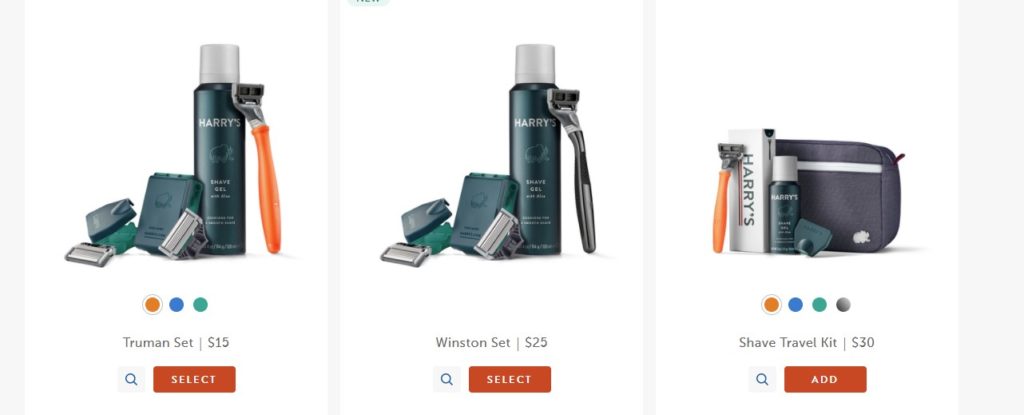
Offering bundles is also an effective way to encourage sales of less popular items. Combining a very popular item with a related (but less popular) item, can increase RPV and clear your stock of items that don’t sell as well.
Look at buyer behavior to decide which items to bundle together. For example, if most customers who purchase a bed also buy a nightstand (or look at nightstands on your site), it makes sense to offer a bundle.
#3. Recommend Related Products
Decision fatigue is real.
The rise of eCommerce has given us more choices than ever, but more options make it harder for users to make a decision. Recommending related products is a simple way to reduce decision fatigue and increase Revenue Per Visitor.
Here are a few ways to offer recommended products:
- Add a carousel of recommendations to product pages, as Amazon does.

- Use a product recommendation popup during check out to increase average order, as Crate and Barrel does.
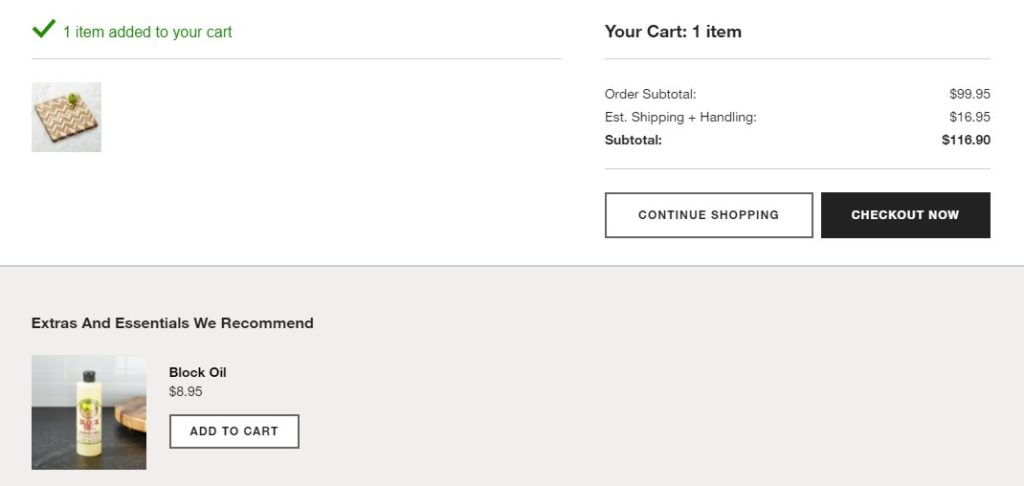
- Send cart abandonment emails recommending related products.
- Add product recommendations on 404 pages, especially those for retired or out-of-stock items.
- Add personalized recommendations based on past user behavior on your home, product, or category pages.
Serving recommended products to users is one method of eCommerce personalization, which not only improves revenue per visitor but also improves conversion rates as well.
Read More: Personalized Marketing: What it Is & How to Use It to Drive Loyalty & Sales
#4. Use Retargeting to Bring Customers Back
Nearly 92 percent of consumers who visit a site for the first time aren’t ready to make a purchase[*].
That means a large portion of your site traffic isn’t ready to buy, which can lower your RPV.
Retargeting ads bring customers back to your site and encourage them to make a purchase. Retargeting uses behavioral data to target users with personalized recommendations and dynamic ads. For example, you might retarget people who have visited a product page with an ad on Facebook for that product.
Retargeting helps move consumers through the funnel and rescue visitors who get pulled off your site by competitor ads or get distracted.
Getting traffic is costly, retargeting ads can increase the percentage of customers who convert, raising your RPV and driving overall revenue.
#5. Offer Intent-Based Promotions
Intent-based promotions get inside your customers’ minds to understand what they want and what types of promotions will drive them to take action. Unlike generic promotions, say offering all new customers 25 percent off, intent-based promotions use buyer behavior to find the minimum push needed to drive sales.
Relying on behavioral insights, such as purchase trends, content viewed, and buying patterns, allows eCommerce brands to send targeted promotions that encourage retention, which increases your Revenue Per Visitor.
Check out how this Namogoo customer saw a nearly 170% increase in RPV when they started using Intent-Based Promotions:
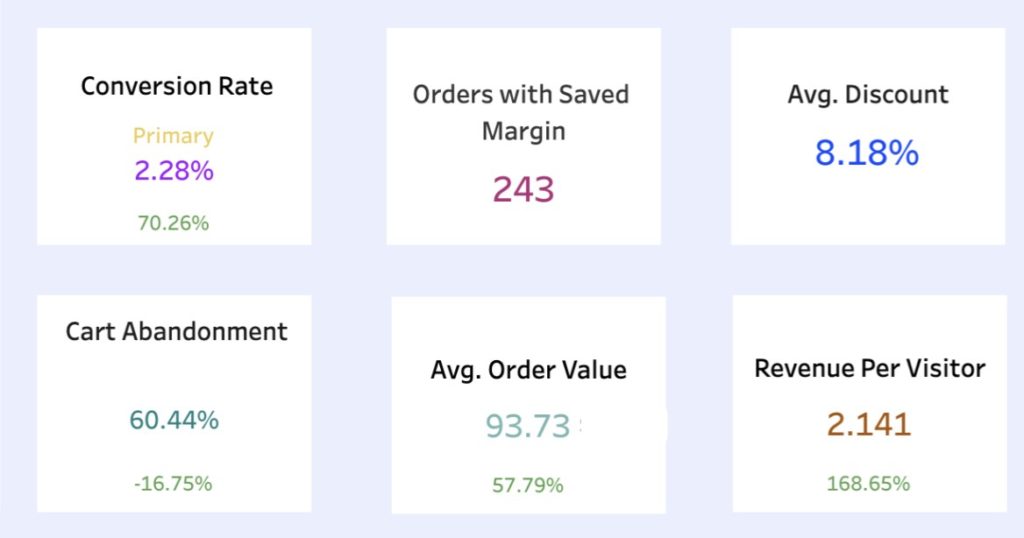
Intent-based promotions don’t just increase RPV, they also decrease purchase time by 45 percent and decrease abandonment by 15 percent.
#6. Build Trust with Social Proof
The eCommerce market has expanded dramatically in recent years. In 2014, eCommerce sales amounted to 1.3 billion dollars; by 2024, sales may exceed 6 billion dollars[*].
That growth is good news for eCommerce businesses, but it’s attracted less-than-honest sellers looking to make a quick buck.
As a result, savvy customers aren’t willing to hand over credit card information to just anyone. They want to know a brand is trustworthy and their products are reliable before spending their hard-earned cash.
That’s where social proof comes in. Social proof is based on the idea that humans, by nature, are more likely to make a purchase or perceive something as valuable if other people have it. How many people would want an iPhone or Tesla if no one else had them?
Adding social proof to your eCommerce site establishes trust and encourages users to complete a purchase, increasing your Revenue Per Visitor. Here are a few strategies to add social proof to your page:
- Add reviews to product pages: This helps users see if an item is the right fit for them. Consider adding star rankings for specific features, such as size, fit, or delivery times.
- Use a site activity popup to show real-time purchases on your site: Showing real-time purchases can increase conversions by 15 percent[*].

- Share user-generated content on social media: If users post about your brand, share it from your brand profiles. This increases trust and shows prospective customers your products in real-life situations.
#7. Use A/B Testing to Reduce Customer Friction
Customer friction is anything in the sales process that causes users to hesitate or abandon their path to purchase. Factors that impact friction can include lack of trust, a complicated check-out process, a slow website, lack of payment options, or expensive delivery fees.
Use A/B testing to see what offers or site changes improve RPV. Areas to consider testing include:
- Check out button size or placement
- Location and frequency of customer reviews
- Product titles or URL structure
- Offering easier payment options, such as PayPal or Amazon Checkout
In addition to testing page elements, make sure your page speed is up to par. Slow load times lead to higher abandonment rates, which lowers RPV.
Don’t Ignore Your eCommerce Store’s RPV
Tracking Revenue Per Visitor provides a clear overall view of the health of your eCommerce site and context for other important metrics, like conversion rate. It is an easy metric to calculate by dividing revenue by unique visitors.
Improving RPV is crucial to building a successful eCommerce business. Take steps to reduce customer friction and increase high-quality traffic to encourage users to convert. Then, offer personalized recommendations and use intent-based promotions to drive current customers to spend more. Together, these strategies will raise your RPV and drive your business forward.





